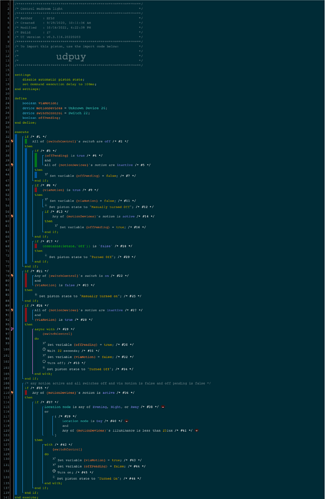When using motion devices, it is common for these devices to have 'built-in' timers for
-
time transition from active to inactive (motion cleared delay)
-
time transition that another 'active' can occur after transition to 'inactive' (re-trigger time)
These can mess with either/both your automations, or your 'spouse acceptance factor'.
What to be aware of:
- the re-trigger time should be taken into account when automations operate, such that there is not a dead zone where the automation appears to not operate due to re-trigger delay.
Example:
So at time:
-
t0: the motion active event occurs
- in this piston it would turn on the light
-
t1: the motion event ends (by the device and the device sends inactive)
- in this piston, it will set a time wait for 22 seconds, after which it turns off the light
-
t2: the timer fires and the light is turned off
The goals are:
-
between t0 - t2, if there are additional motions noticed, that the light would stay on
-
immediately after t2, the light would come on (immediately) if new motion is detected
What to be aware of:
-
For my device, it has a re-trigger time of 8 seconds
-
if there was no wait in the automation, or a wait of less than the re-trigger time, there can be time windows in which a new motion event would not occur in a timely fashion, thus someone walking within the range of the sensor does not turn on or extend the on for the light as expected.
- so things appear to flash, or go off, or not go on, while people are present.
-



